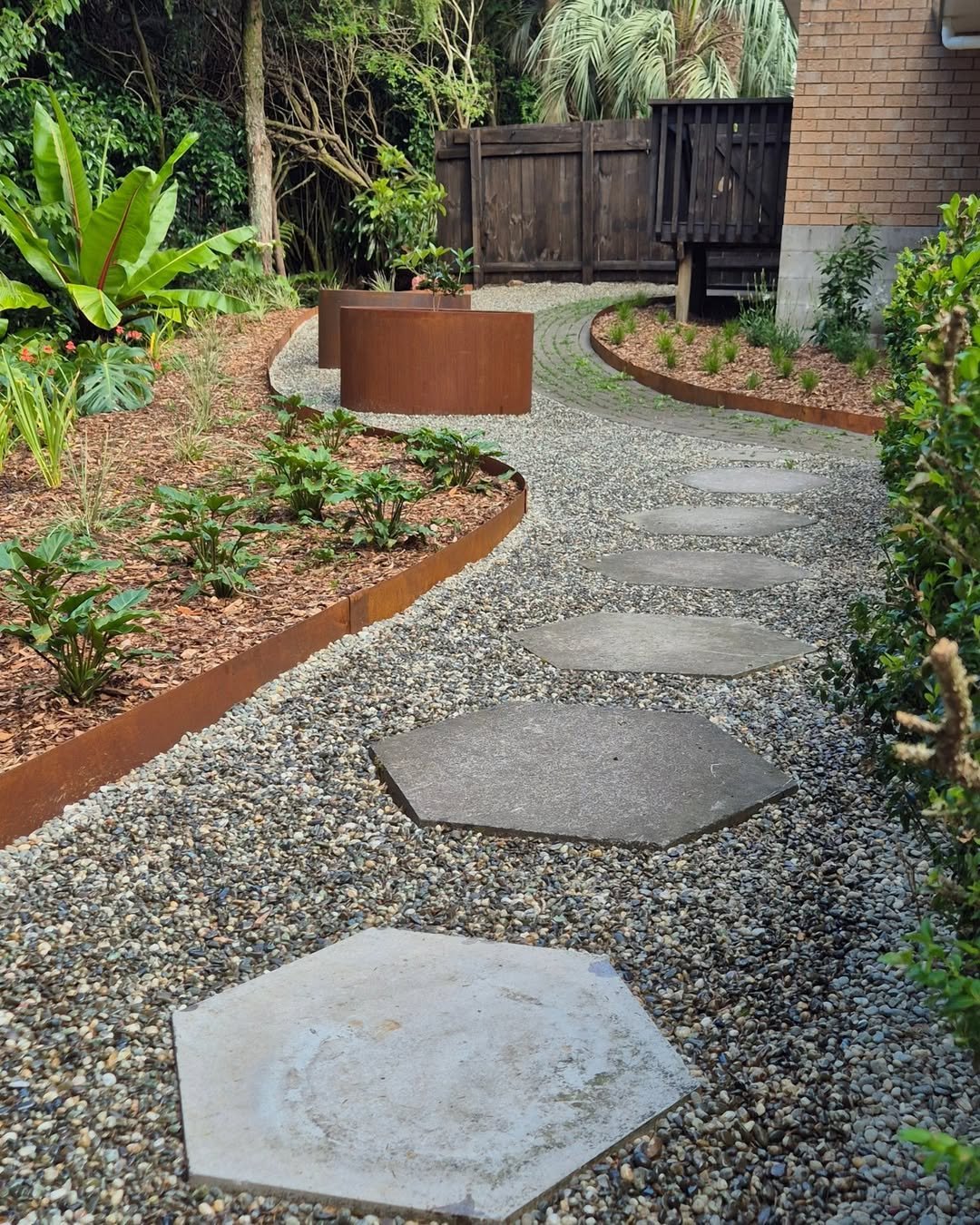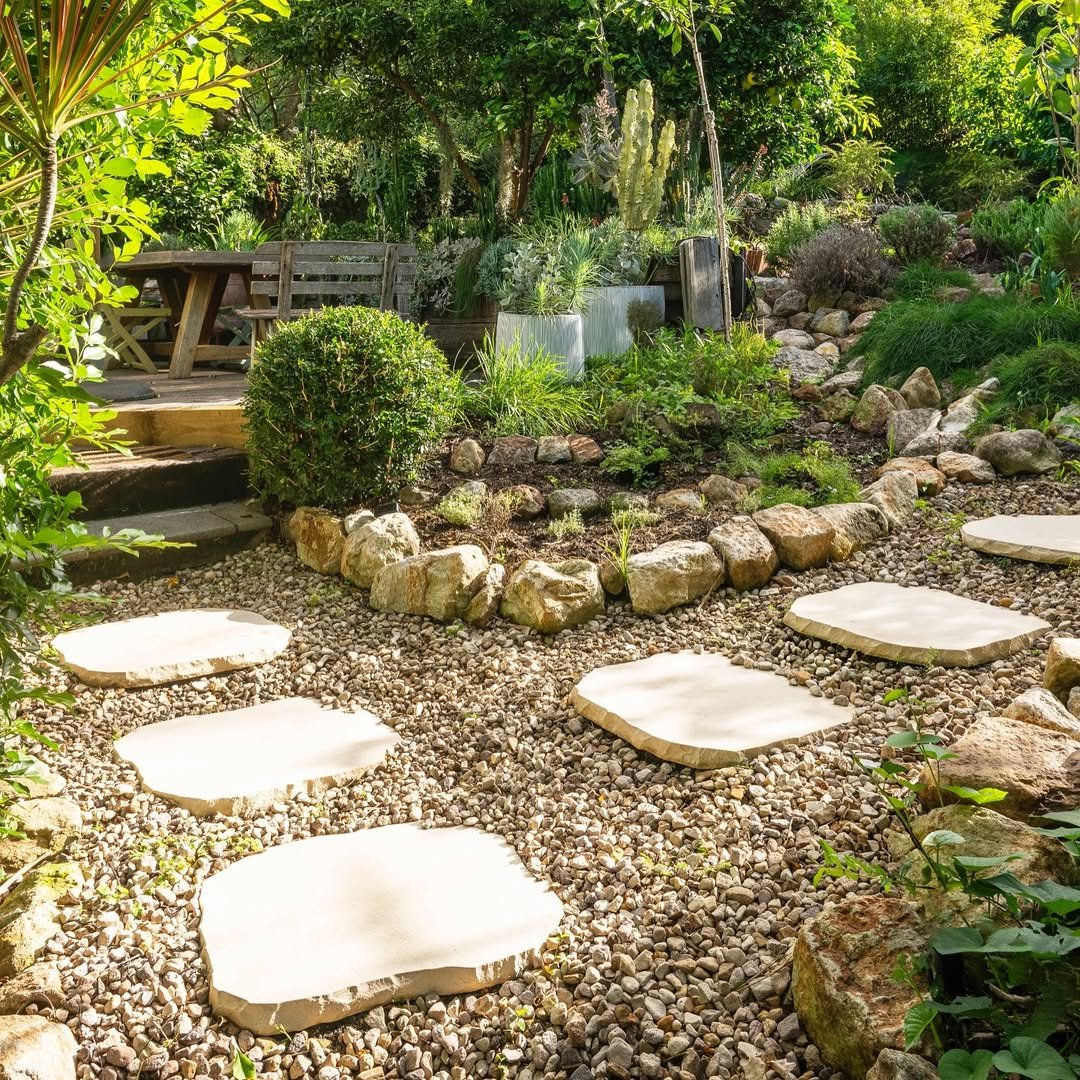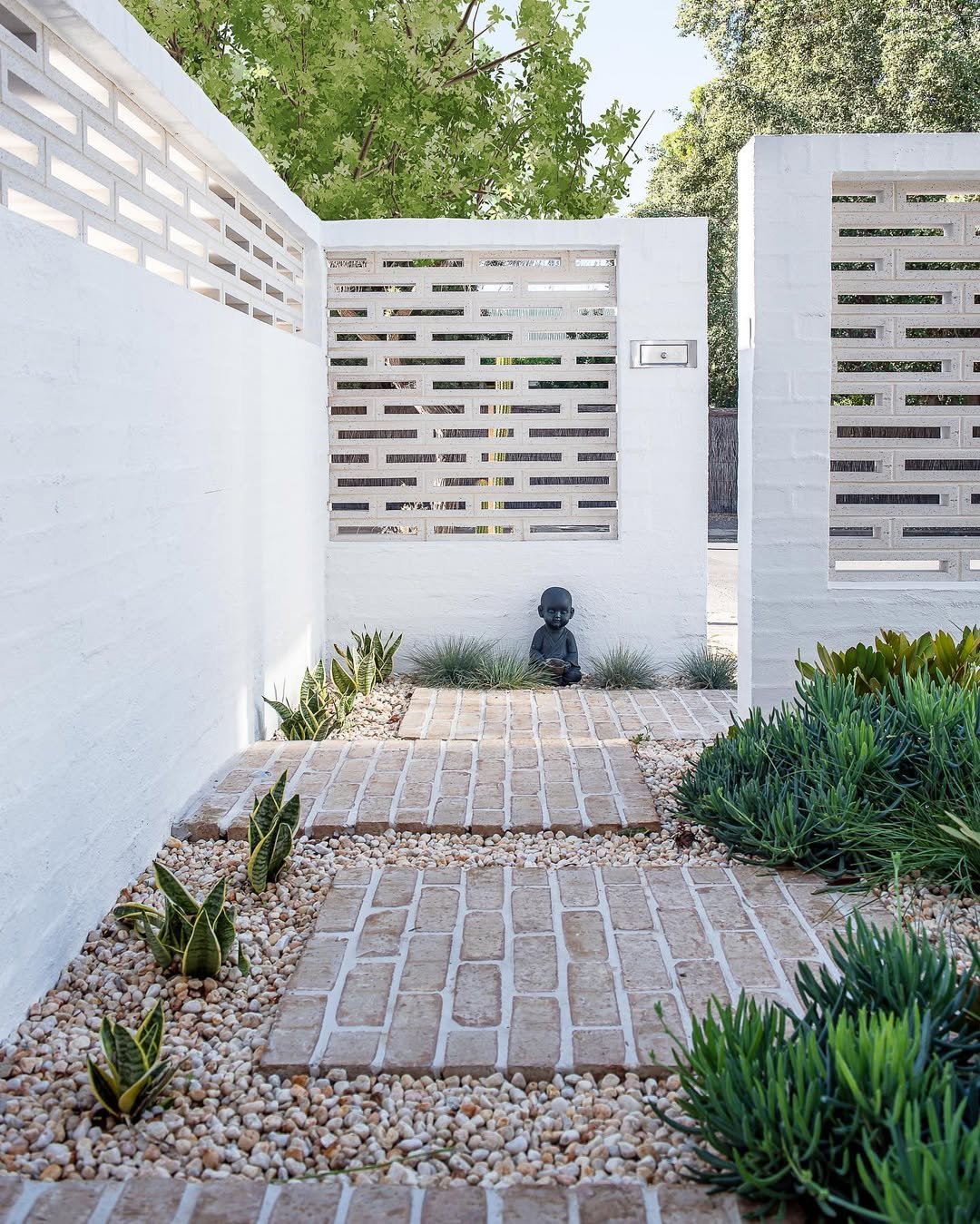20 Cheap Walkway Ideas DIY (Money-Saving Tips!)

Want to add beautiful paths to your yard without spending much money? You can create stunning walkways using simple materials and basic DIY skills. These budget-friendly ideas will help transform your outdoor space into something special.
We’ve gathered 20 creative walkway ideas that use affordable or free materials like gravel, recycled bricks, and natural elements. From classic stepping stones to unique glass bottle paths, there’s something here for every style and skill level. Most of these projects can be completed in a weekend.
These walkway ideas aren’t just cheap – they’re also practical and long-lasting. With some planning and creativity, you can build paths that look expensive but cost very little. Let’s explore these budget-friendly options for your yard.
Table of Contents
20 Cheap Walkway Ideas DIY
Looking to create beautiful but cheap walkway ideas without breaking the bank? DIY walkways can transform your outdoor space. With some creativity and basic materials, you can build stunning paths that add charm to your yard.
Let’s share some ideas with you!
1. Gravel and Stepping Stone Mix
Create an easy path by laying out large stepping stones and filling the gaps with pea gravel. Start by leveling the ground and laying landscape fabric to prevent weeds. Space the stones about two feet apart for comfortable walking.
Edge the path with pressure-treated lumber or recycled brick to contain the gravel. The combination of smooth stones and crunchy gravel adds visual interest and texture while being incredibly budget-friendly and easy to maintain.
2. Repurposed Brick Path
Collect used bricks from construction sites or online marketplaces. Clean them up and lay them in a herringbone pattern for extra stability. Start with a leveled, compacted base of sand to prevent shifting.
Create interest by mixing different colored bricks or laying them in various patterns. The weathered look of used bricks adds character and their durability means your path will last for years with minimal maintenance.
3. Mulch and Log Slices
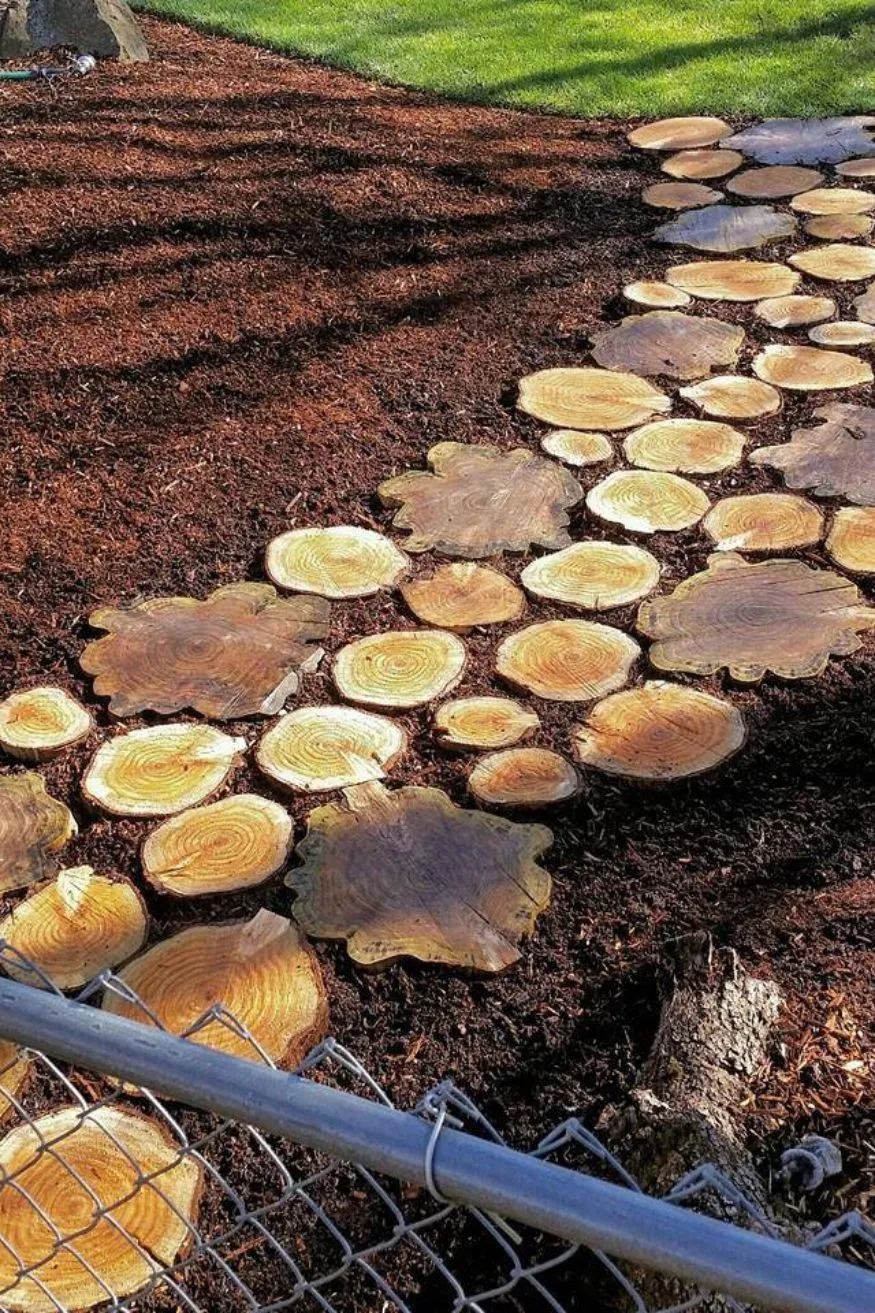
Cut fallen tree logs into 2-inch slices and arrange them in a winding pattern. Fill the spaces between with natural mulch or wood chips. The log slices provide solid stepping areas while the mulch creates a cohesive look.
Treat the log slices with a wood preservative to extend their life. This rustic solution is perfect for garden paths and woodland areas, offering a natural aesthetic that improves with age.
4. Painted Concrete Squares
Pour small concrete squares using simple wooden forms. Once cured, paint them with exterior paint in coordinating colors or patterns. Space them evenly and fill gaps with gravel or ground cover plants.
This affordable option allows for creativity in design and color. The concrete squares can be customized to match your home’s exterior, and the spacing between them creates visual rhythm.
5. Broken Concrete Mosaic
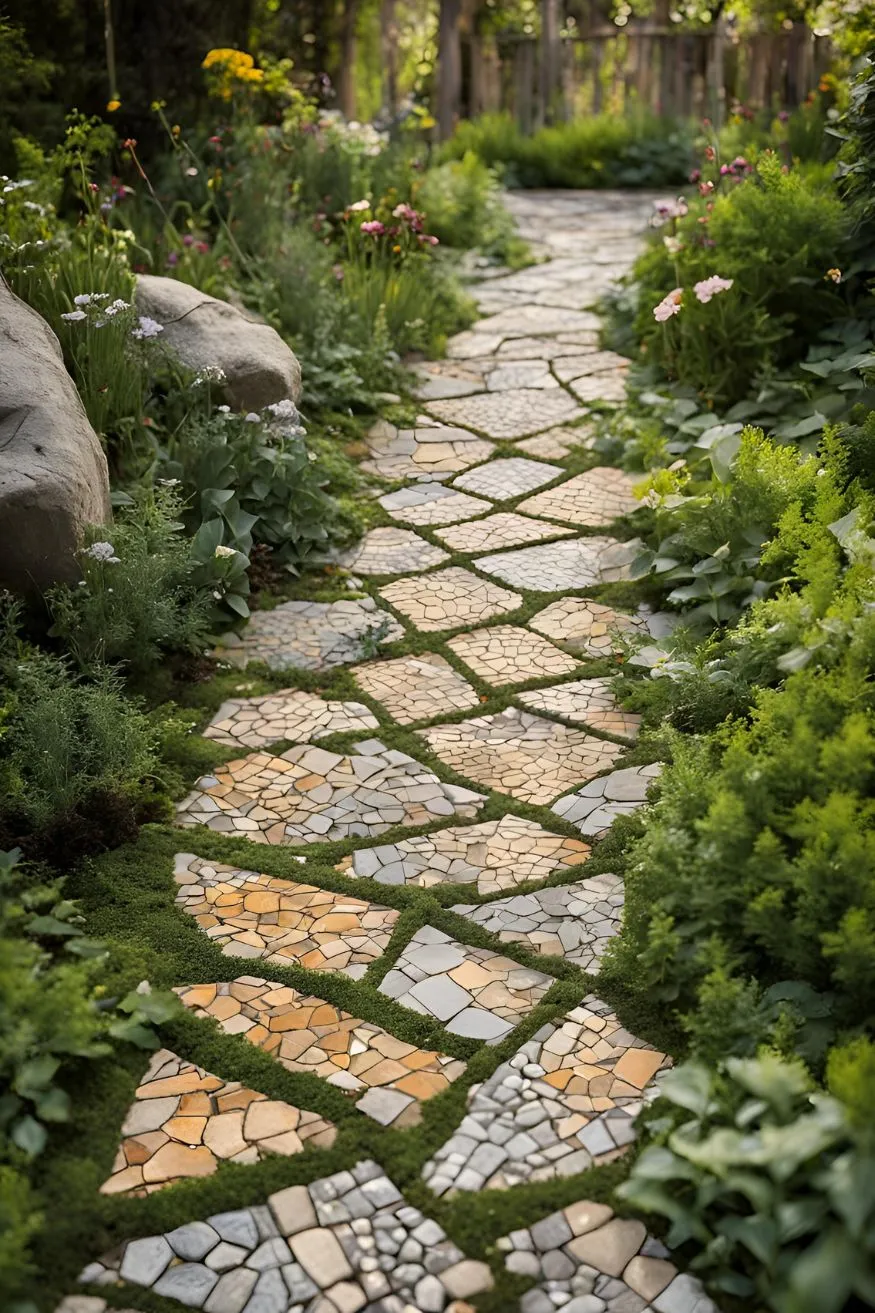
Break up old concrete slabs into irregular pieces and arrange them like a mosaic. Set them in sand and fill gaps with pebbles or creeping thyme. This recycled solution turns demolition waste into garden art.
The irregular shapes create organic flow, while plants growing between pieces soften the look. This path option costs almost nothing if you can source broken concrete from construction sites.
6. Stamped Concrete Path

Create a simple concrete path and stamp it with leaves, ferns, or geometric patterns before it sets. Use concrete colorant to add warmth. This technique requires only basic concrete materials and found objects for stamping.
The stamped patterns add texture and interest while keeping costs low. The solid concrete base means minimal maintenance and long-lasting durability for your garden walkway.
7. Mixed Material Path

Combine different materials like gravel, mulch, and stepping stones to create an interesting path. Use materials you can find for free or cheap. Section off different areas using pressure-treated lumber as dividers.
This approach allows you to use whatever materials are available locally. The mix of textures and colors creates visual interest while keeping the project within budget.
8. Pallet Wood Path
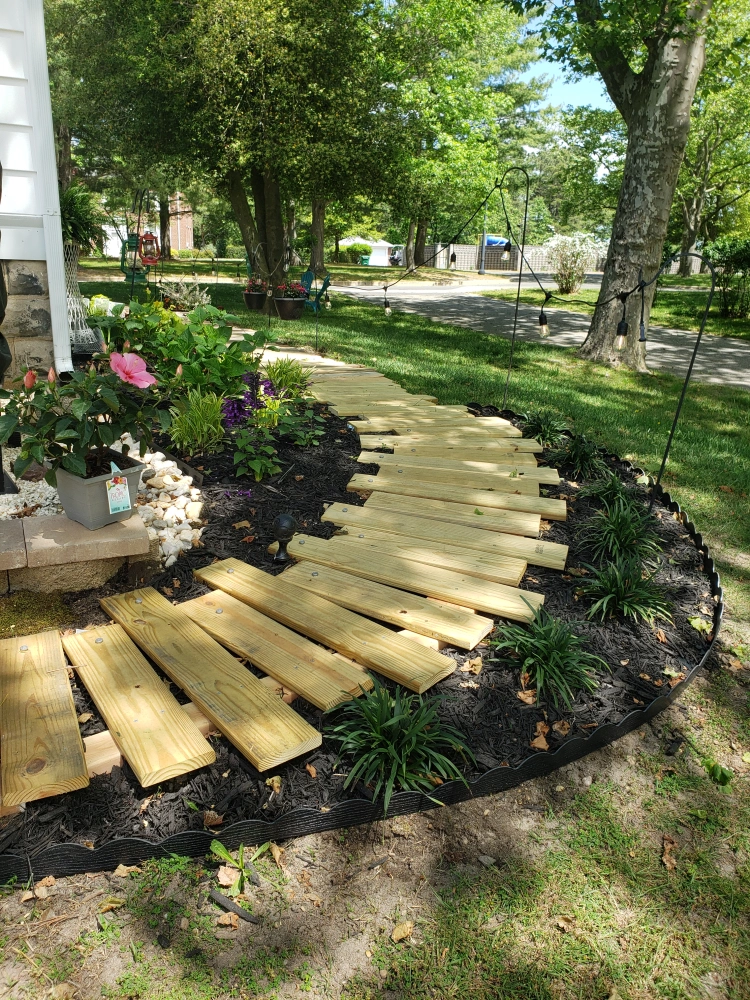
Disassemble wooden pallets and cut the boards to uniform lengths. Lay them in a staggered pattern on a bed of gravel. Treat the wood with exterior sealer to protect against weather.
This recycled wood solution creates a charming boardwalk effect. Space the boards slightly apart to allow for drainage and prevent water accumulation.
9. Stone Dust Path
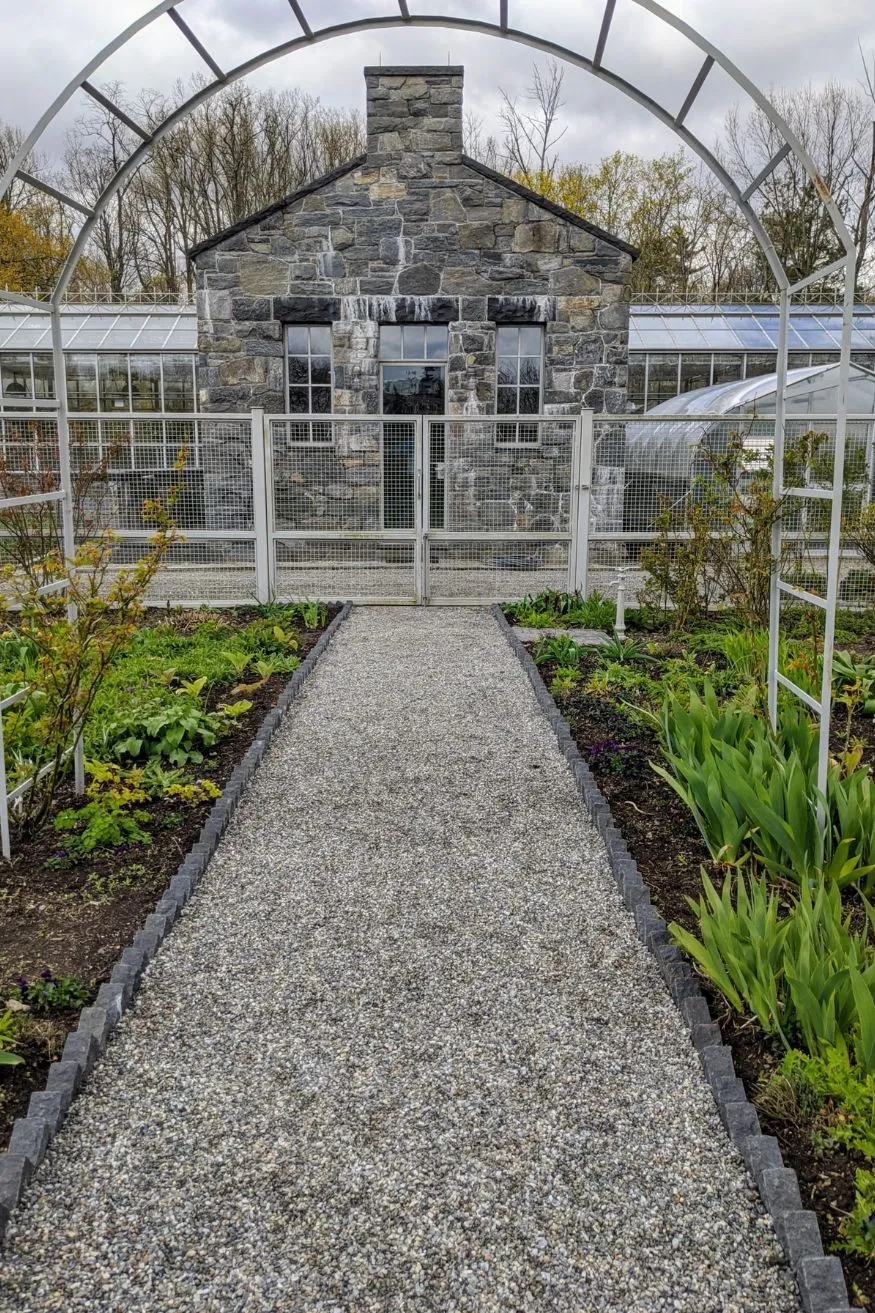
Create a simple path using stone dust, a byproduct of stone crushing. Level the ground, add landscape fabric, and spread a thick layer of stone dust. Compact it well for a solid surface.
Edge with recycled materials like bottles or bricks. The fine texture creates a smooth walking surface that’s perfect for casual paths and remains stable in all weather conditions.
10. Glass Bottle Path
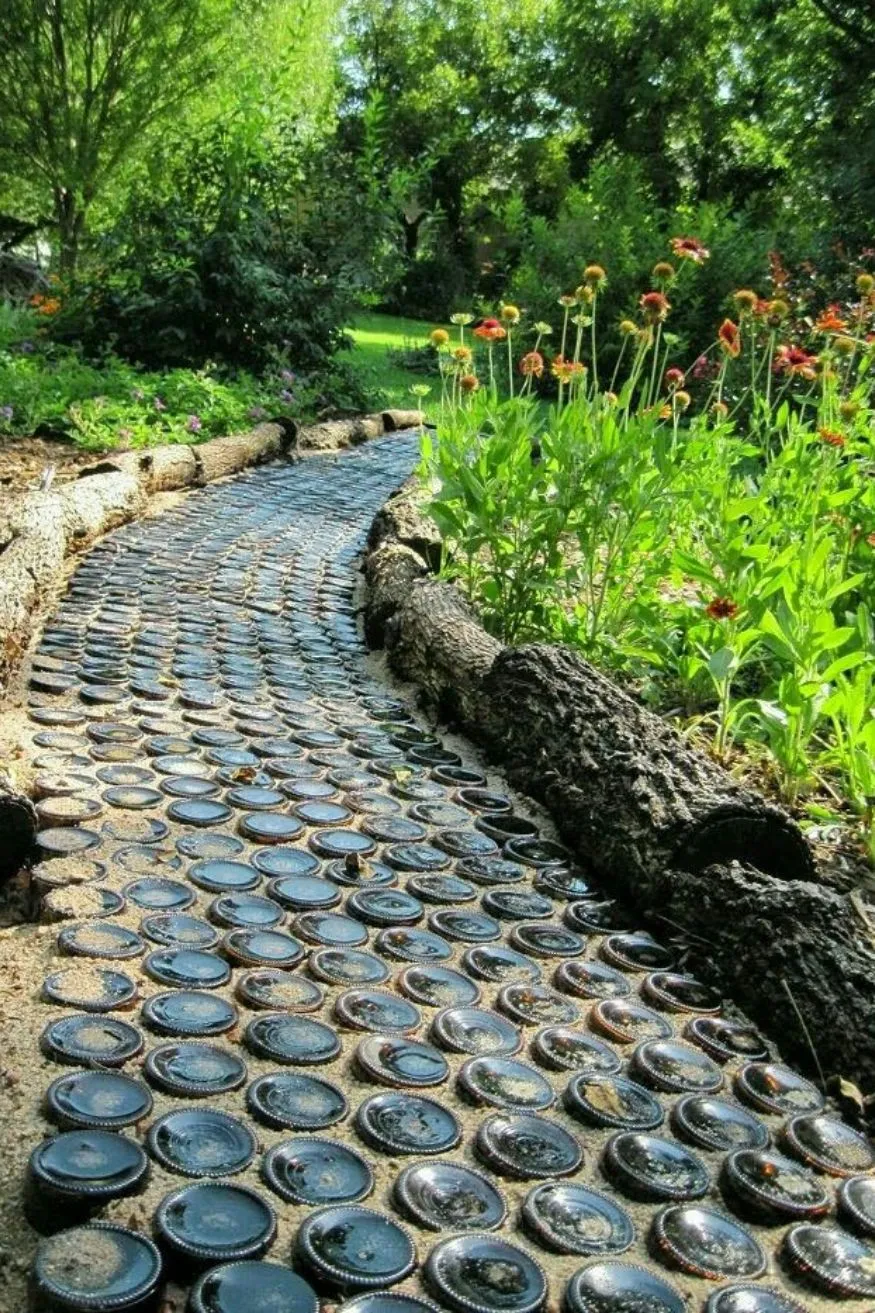
Collect colored glass bottles and bury them neck-down in concrete. Create patterns or random designs. This unique path catches sunlight and creates beautiful effects throughout the day.
The bottles can be sourced for free, and the only cost is concrete. This conversation starter adds whimsy to your garden while recycling materials that might otherwise end up in landfills.
11. Natural Stone Mosaic
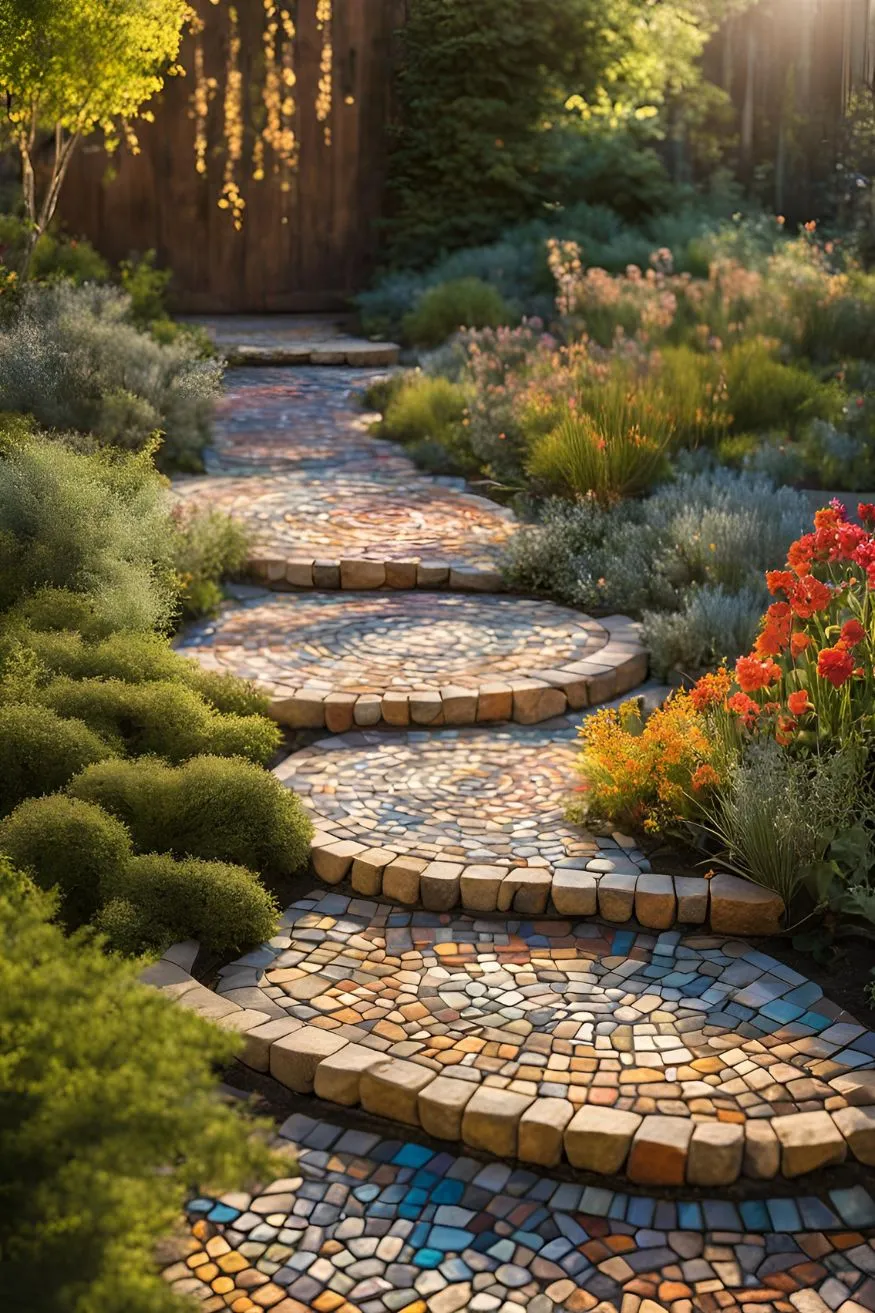
Collect flat stones from local sources and arrange them in a mosaic pattern. Set them in sand and sweep more sand into the gaps. Choose stones of similar thickness for a level walking surface.
This time-intensive but low-cost option creates a one-of-a-kind path. The natural variations in stone color and shape add organic beauty to your landscape.
12. Recycled Tile Path
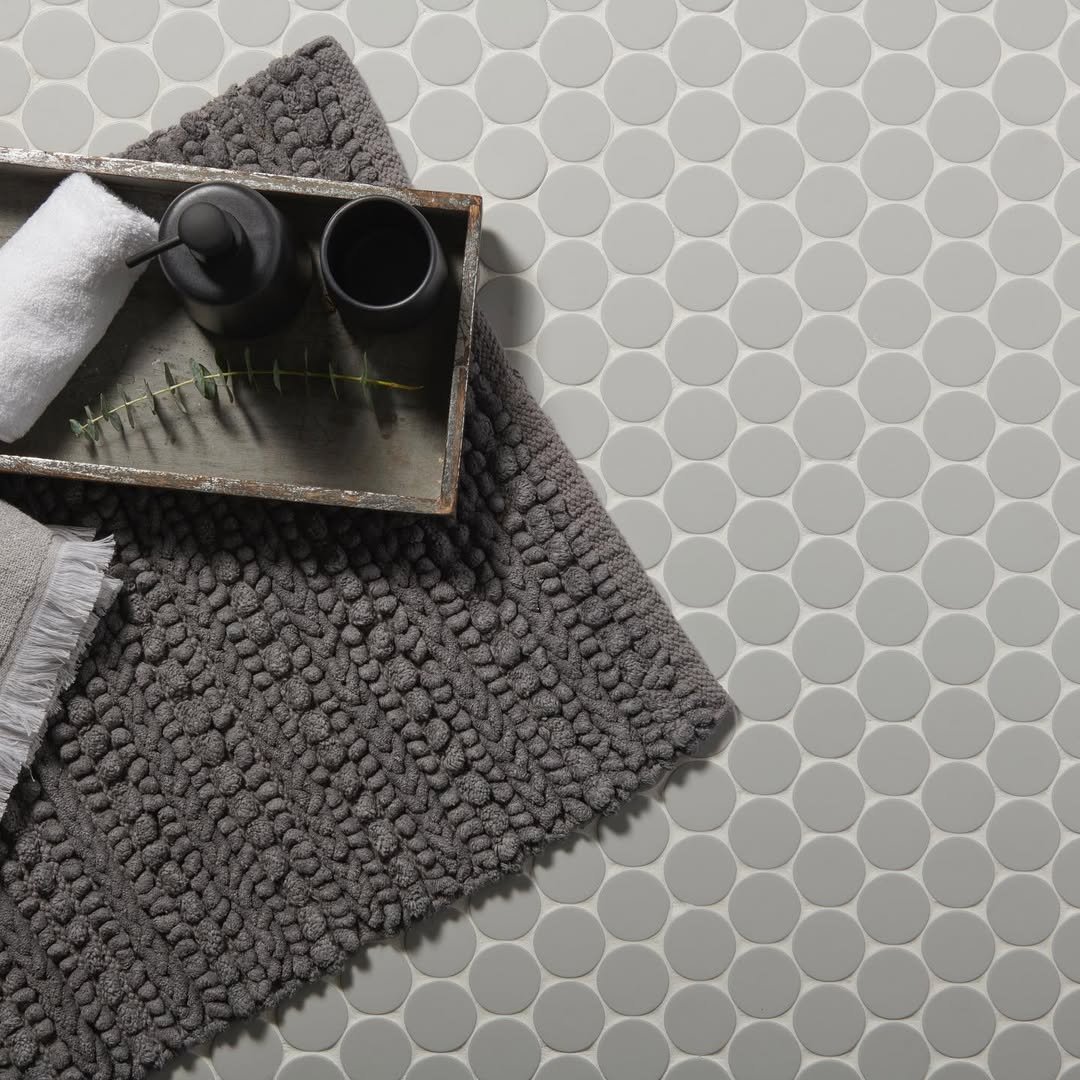
Source leftover tiles from construction sites or discount stores. Lay them in a bed of sand, creating patterns with different colors. Use exterior-grade tiles for durability.
Fill gaps with grout or let grass grow between tiles. This affordable option brings color and pattern to your garden while making use of materials that might otherwise go to waste.
13. Pine Needle Path
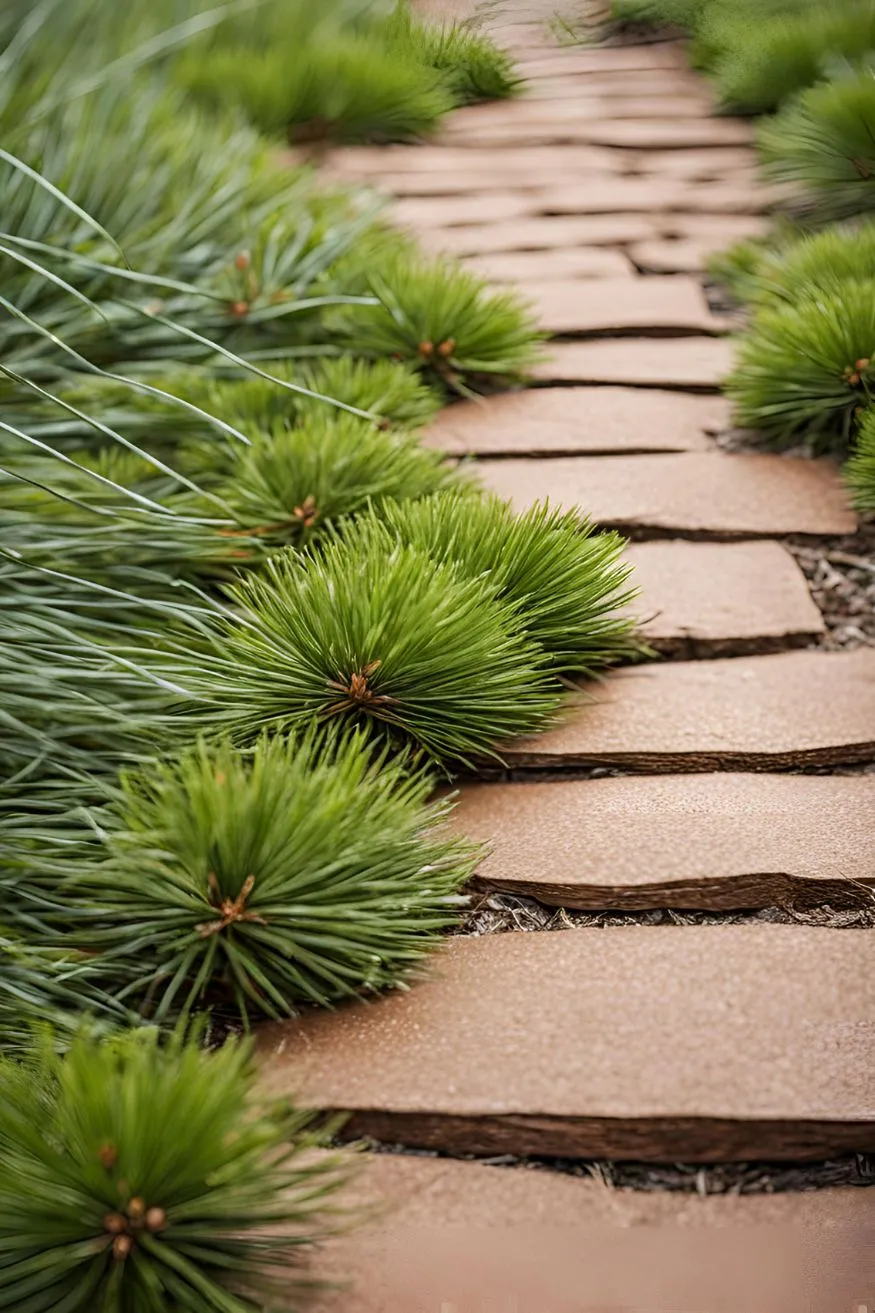
Layer pine needles over landscape fabric for a soft, natural path. Edge with found stones or recycled lumber to contain the needles. This solution is perfect for woodland gardens and shaded areas.
Replenish the needles annually as they decompose. The pleasant pine scent and springy texture make this an appealing option for casual garden paths.
14. Bamboo Slice Path
Cut bamboo stalks into thin rounds and set them in sand or concrete. Create interesting patterns by mixing different sizes. Seal the bamboo to protect against weather and insects.
This exotic-looking path can be created from invasive bamboo stands, making it eco-friendly and unique. The circular patterns create visual interest while providing stable footing.
15. River Rock Lines
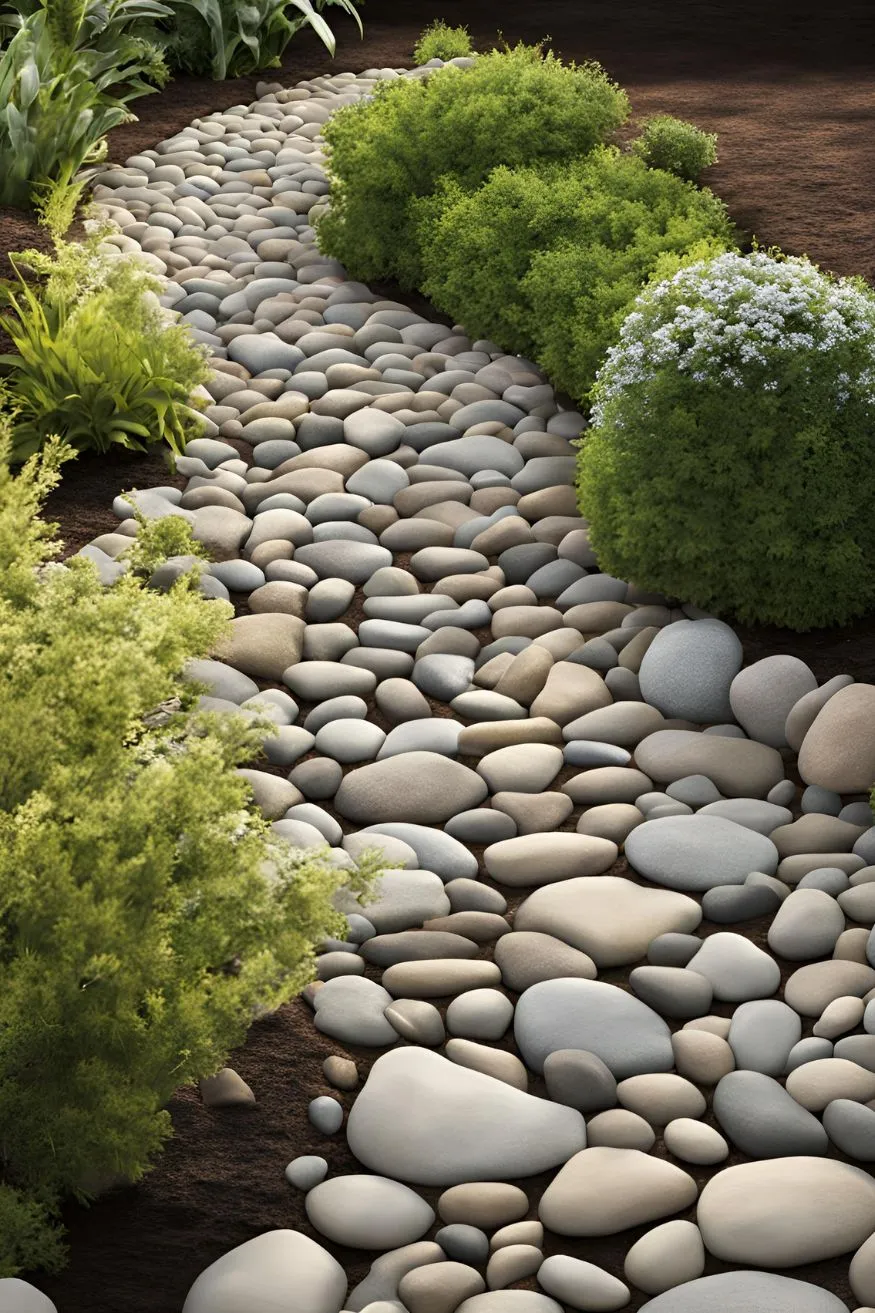
Create simple lines using river rocks set in sand. Space several parallel lines to form a path. This minimalist approach requires only basic materials and creates a zen-garden effect.
Fill between the rock lines with gravel or let grass grow. This design combines natural materials with geometric precision for an elegant look on a budget.
16. Recycled Rubber Path
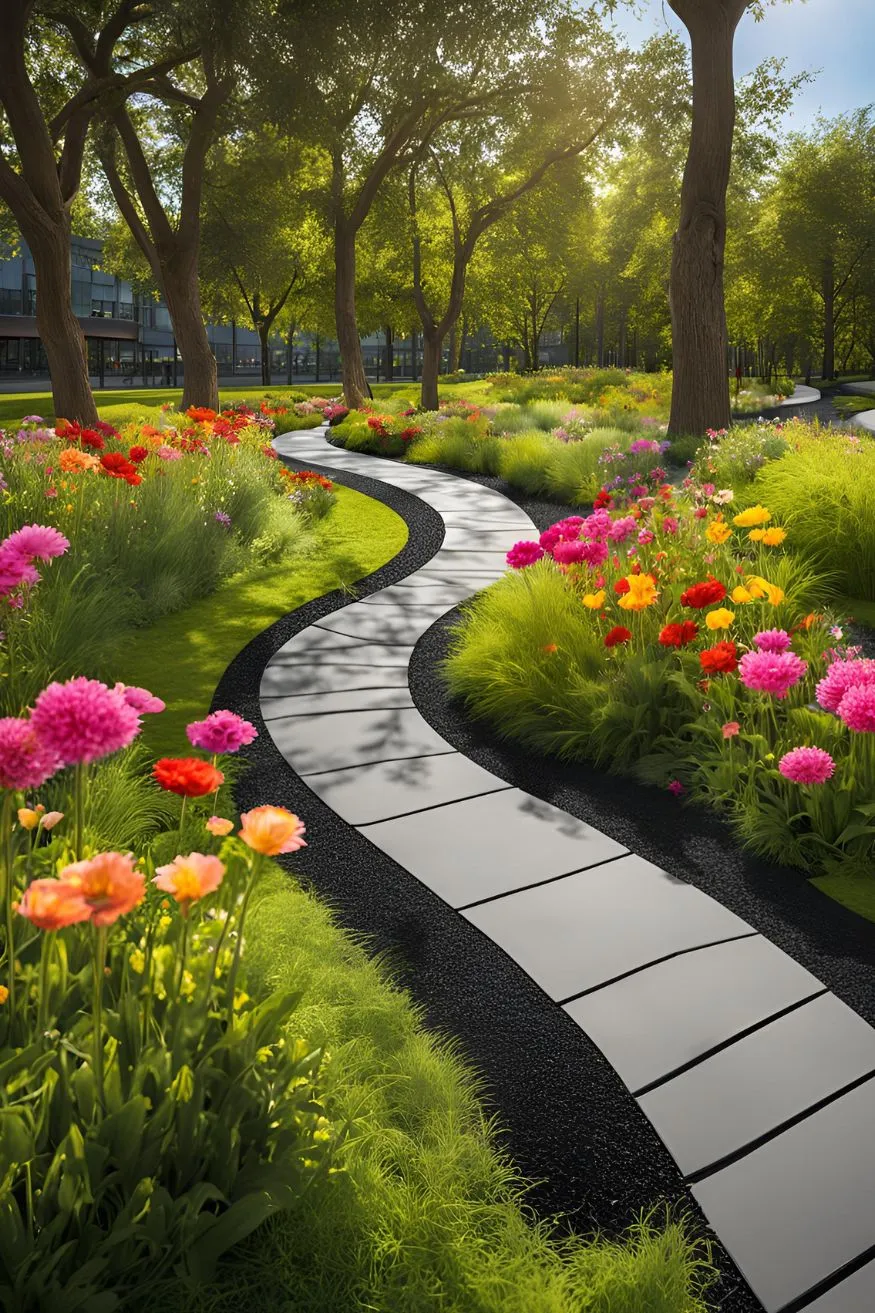
Use shredded rubber mulch from recycled tires to create a soft, bouncy path. Edge with pressure-treated lumber and lay landscape fabric underneath to prevent weed growth.
This comfortable walking surface is perfect for play areas and requires minimal maintenance. The rubber mulch comes in various colors and provides excellent drainage.
17. Sand and Shell Path
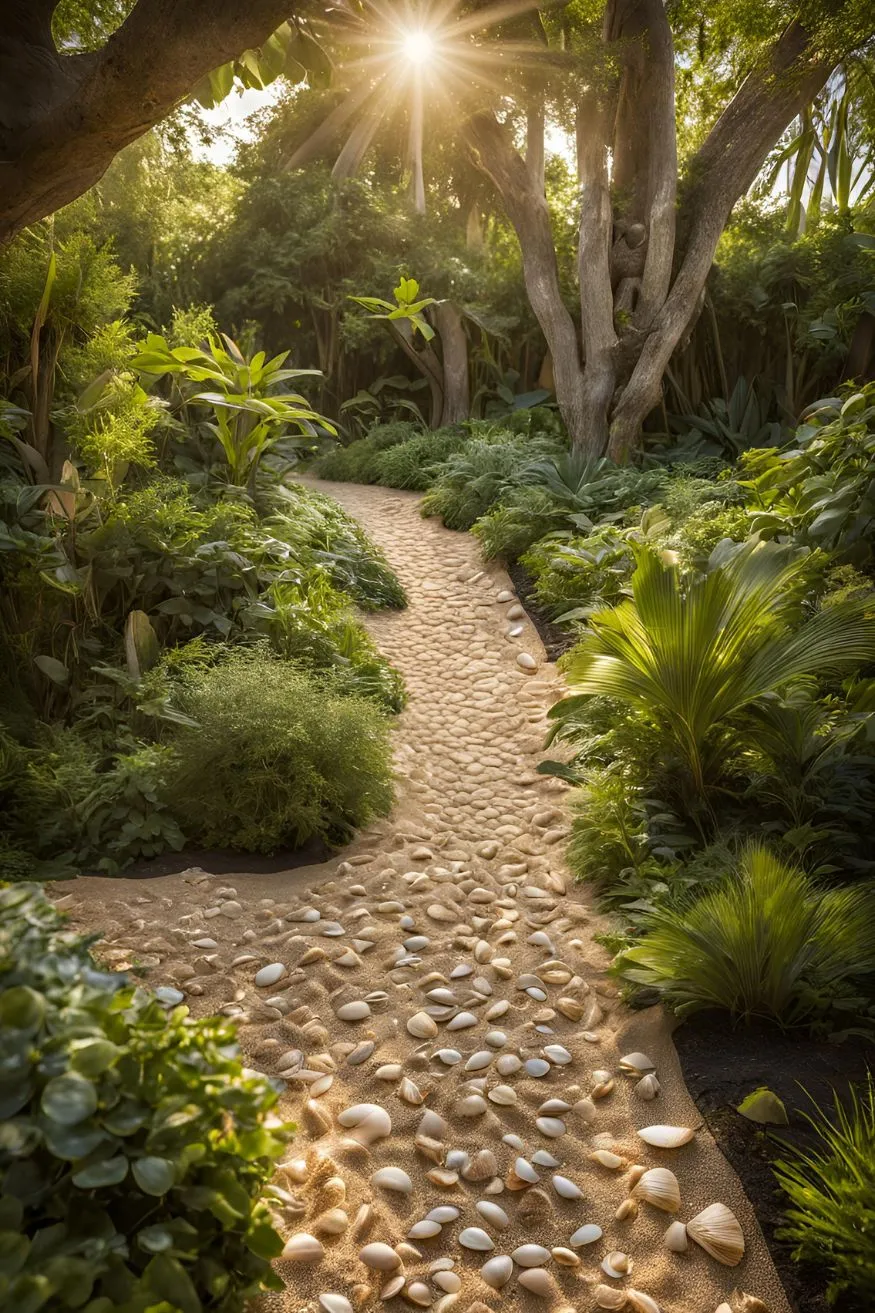
Create a beach-inspired walkway using sand and collected seashells. Edge with pressure-treated lumber and layer shells densely for stability. This design works well in coastal gardens.
Add landscape lighting to make shells sparkle at night. This budget-friendly option brings seaside charm to your garden and can be enhanced with found beach treasures.
18. Stenciled Concrete Path
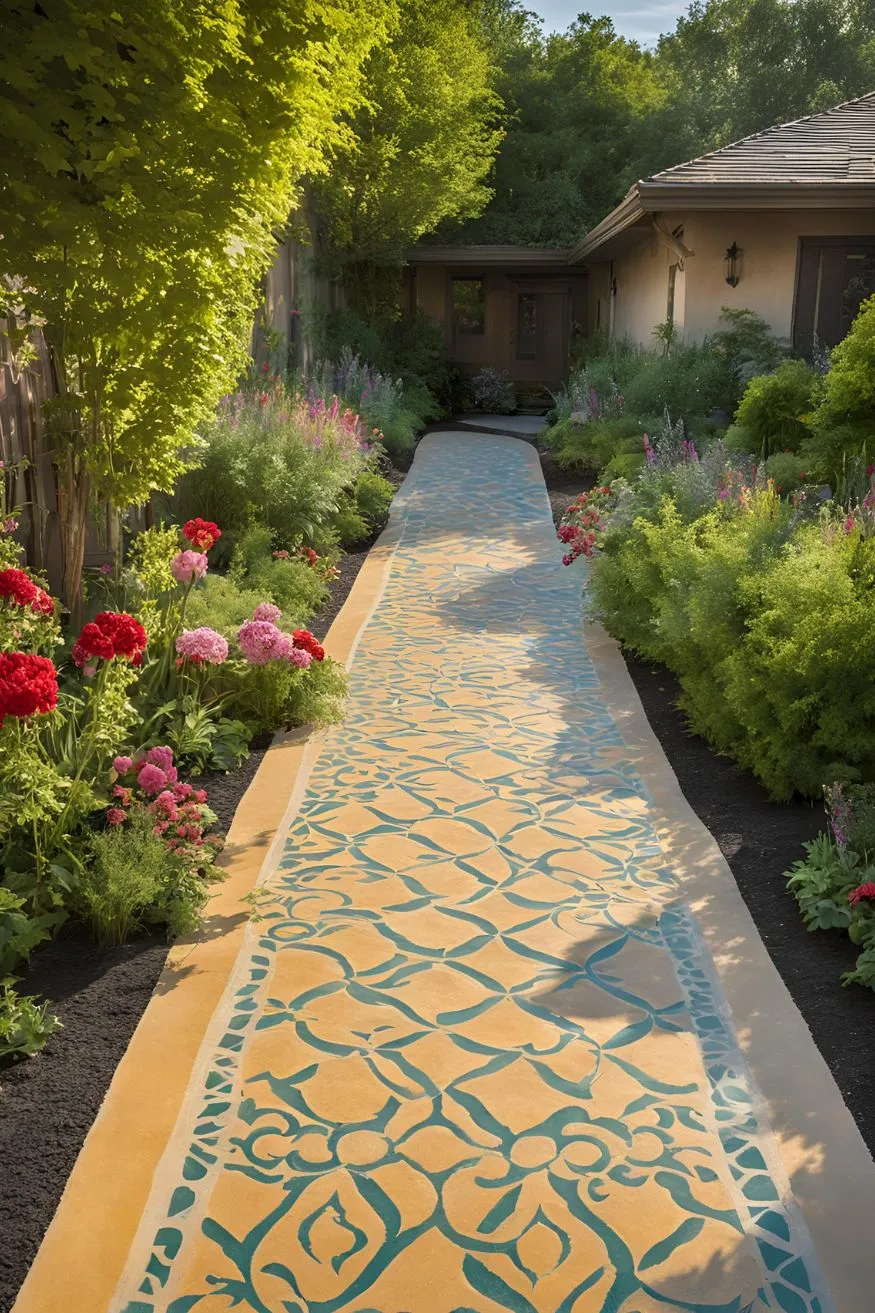
Pour a simple concrete path and use stencils to create patterns before it sets. Use concrete stain for color. This technique creates the look of expensive tiles for a fraction of the cost.
The stenciled patterns can match your home’s style or create unique garden art. This durable solution combines creativity with practicality.
19. Grass and Stone Strips
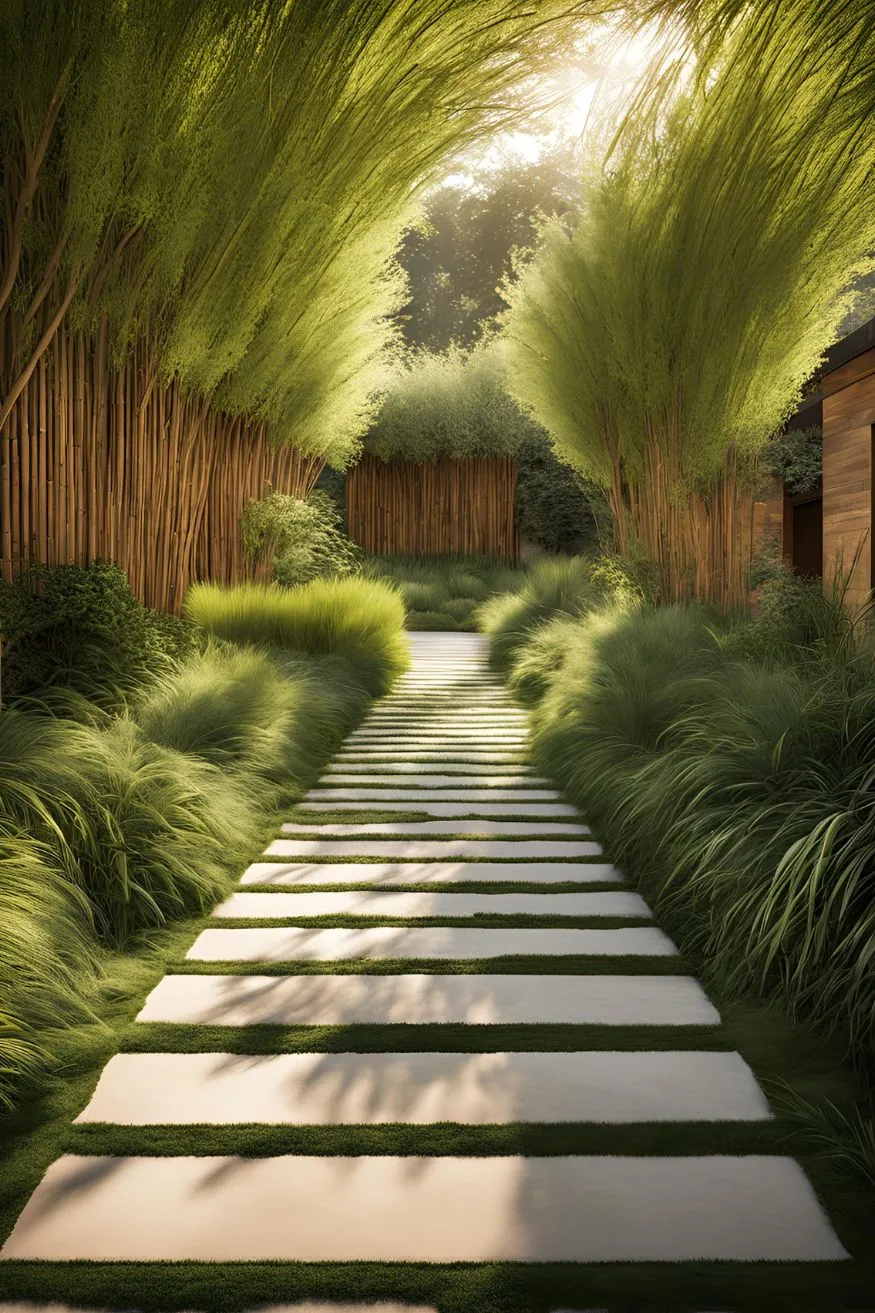
Alternate strips of stone or concrete with grass to create a linear path. Space the hard elements to accommodate your walking stride. This design combines green space with solid footing.
The grass strips provide natural drainage and soften the look. This eco-friendly option reduces materials cost while creating an interesting visual pattern.
20. Mixed Pebble Path
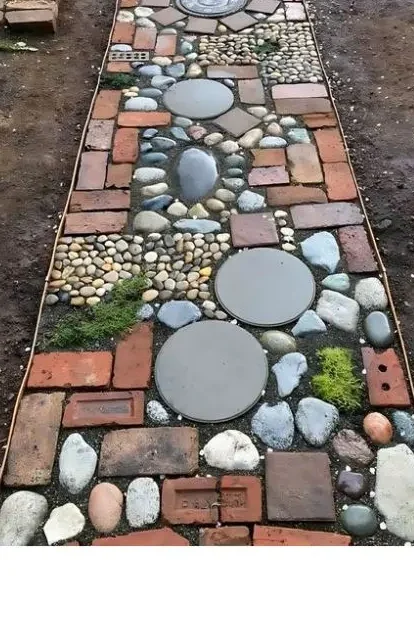
Create patterns using different colored pebbles set in concrete. Draw your design first and separate sections with wooden forms while working. This technique creates stunning results with basic materials.
The pebble mosaic can incorporate simple shapes or complex patterns. This durable path option allows for creativity while keeping material costs low through the use of found or purchased pebbles.
Related Articles:
Final Word
Creating stunning cheap walkway ideas DIY doesn’t have to cost a lot. With simple materials and a bit of creativity, you can design paths that add charm to your outdoor space. From gravel to recycled items or natural elements, there are many affordable options to explore. Choose what matches your style and needs.
These budget-friendly ideas are not only beautiful but also durable, ensuring your walkway lasts for years. Start your DIY project today and enhance your outdoor area effortlessly!

